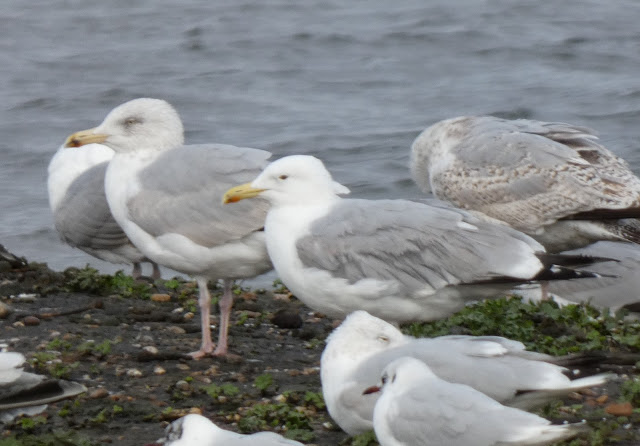Wildlife sightings for 28th April 2013
Today we did our annual Dawn Chorus walk. It was a frosty start at 5 a.m. but nevertheless we had a few species singing, including:
Cetti's Warbler
Chiffchaff
Willow Warbler
Reed Warbler
Sedge Warbler
Blackcap
Garden Warbler
Common Whitethroat
Lesser Whitethroat
single Redpoll and Siskins
Also seen today:
1 Hobby - flew over main lake at 14:15, flew S
1 Peregrine - main lake
1 Kestrel - hunting main lake
5 Redshank - scrape, main lake
3 Lapwing chicks - scrape
2 Common Tern - main lake
3 Swift - over main lake
3 Yellow Wagtail - scrape
To allow the sand martins to establish their nests the nest bank will be closed from April 18. It will reopen, probably towards the end of May, once the chicks are being fed. The birds can still be observed entering and leaving the bank from the Peacock Tower or the Wader Scrape Hide.
Recent bird highlights: Bittern, Little Egret, Peregrine, Buzzard, Shelduck, Garganey, Common Sandpiper, Ringed Plover, Little Ringed Plover, Redshank, Oystercatcher, Curlew, Mediterranean Gull, Little Gull, Yellow Wagtail, Wheatear, Black Redstart, Redstart, Bearded Tit, Stonechat, Rock Pipit, Ring Ouzel.
Regular Bearded Tit sightings continue with one or two birds being spotted in the main reedbed.
Wader passage is very good at present with recent sightings of Black-tailed Godwit, Dunlin, Redshank, Common Sandpiper, Ringed Plover and Little Ringed Plover. Other spring arrivals have included Wheatear, Chiffchaff, Willow Warbler, Blackcap, Sedge Warbler, Ring Ouzel, Swift, Swallow, House Martin and Sand Martin.
The marsh is good for watching Lapwing displaying over their breeding territory, as well as feeding Yellow Wagtail, Sand Martin and Wheatear. Often the Wagtails will feed close around the cattle where there’s an abundance of insects.
The last of the wintering birds are moving off now with small numbers of Fieldfare, Redpoll, Shoveler, Teal, Gadwall and Wigeon still in evidence.
Butterflies and other insects: Brimstone, Comma, Peacock, Painted Lady, Bee-fly, Large White.
Reptiles: Several Common Lizards have been seen on log piles on the South Route, and also at the base of the Dulverton hide. Slow Worms are starting to appear below the survey tins. Our first 4 Grass Snakes of the year were seen near the summer route on the 14th.
Flowering plants: Groundsel, Hairy Bitter-Cress, Lesser Celandine, Primrose, Sweet Violet, Sweet William, Wood Anemone, Cowslip, Marsh Marigold, Wild Daffodil, Red+White Dead Nettle, Annual Meadow-Grass, Butterbur, Colt’s Foot, Chickweed, Common Field Speedwell, Lungwort, Common Whitlowgrass, Cow Parsley, Dandelion, Frittilary, Forget-me-not, Hazel, Silver Birch, Blackthorn, Alder, Aspen, Cherry Plum, Crack Willow, Goat Willow, Grey Willow, Osier, Wild Cherry.
Water Voles: best place to see one would be one of the ponds near the Pond Zone building or ‘Down the Plughole’ exhibit. Also the ponds as you enter the wildside area from world wetlands – there’s plenty of feeding activity here.



